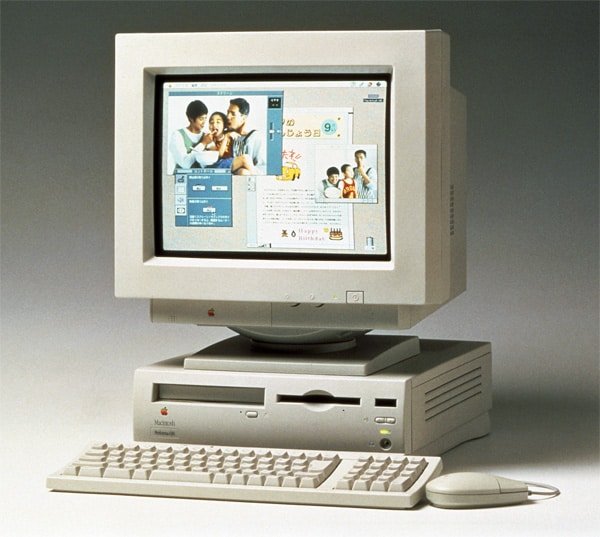In the ever-evolving world of technology, some milestones stand out as true game-changers. Back in 1994, Apple released System Software 7.5, a cutting-edge operating system designed exclusively for their Macintosh computers. This groundbreaking software introduced a plethora of features that revolutionized the user experience and laid the foundation for the user-friendly operating systems we use today.
One of the standout features of System Software 7.5 was the Control Strip, a visionary attempt at streamlining the user interface and providing quick access to vital functions. Managing the system volume, toggling AppleTalk, or even controlling audio CD playback became a breeze with this innovative addition. The Control Strip marked a major step towards making Macintosh computers more accessible and user-friendly.
Another remarkable feature introduced with System Software 7.5 was QuickTime 2.0. This upgrade to Apple’s multimedia framework allowed users to effortlessly play and create videos, audio files, and various other media formats. QuickTime 2.0 was a game-changer, paving the way for the rich multimedia experience that Mac users enjoy today.
But System Software 7.5 was not just about adding flashy features; it also addressed critical issues faced by users in the early days of computing. The introduction of PC Exchange was a game-changer, enabling seamless file transfers and data exchange between Macintosh and PC systems. In a time when many people had to work with both Macs and PCs, this feature was a lifesaver.
Beyond its feature set, System Software 7.5 made history in another way – it became the first system software distributed on CD-ROM. This move made the software more accessible and user-friendly for the growing Macintosh community. System Software 7.5 may have been succeeded by Mac OS 7.6, but its impact on Apple’s computing history remains indelible.
| Released | September 12, 1994 |
| Original Price | Unknown |
| System Requirements | Motorola 68000 processor or later PowerPC processor 4 MB RAM (68k) 8 MB RAM (PPC) 21 MB of hard disk space |
| Distribution | 1.44 MB floppy disk CD-ROM |

Fast forward to today, and System Software 7.5 celebrates its 29 birthday, yet its influence is still palpable. Many of the features it introduced have evolved and become integral parts of modern computing. The user-friendly interface design principles that started with the Control Strip have shaped the way we interact with devices and software.
The legacy of System Software 7.5 extends beyond its features; it represented a turning point for Apple. With this release, Apple showcased its commitment to creating powerful, innovative, and user-centric operating systems – a tradition that continues to define the company’s ethos.
Let’s delve into the specifics of System Software 7.5 to truly appreciate its impact on Apple’s computing landscape. Codenamed “Mozart,” it hit the market on September 12, 1994, boasting several significant updates. Apple Guide, an interactive help system accessible within applications, made finding answers to user queries a breeze. The addition of the clock in the menu bar, Stickies, and WindowShade further enhanced the user experience.
For Power Macintosh computers, System Software 7.5 showcased the Graphing Calculator, demonstrating the raw power of the new PowerPC architecture. Additionally, it was the first Macintosh OS to provide Internet access out of the box via the MacTCP control panel, marking a pivotal moment in the era of web connectivity.
System Software 7.5 was not without its subsequent updates, each addressing bugs and adding new features. System Software 7.5.1 set the stage for Mac clones with its new “Mac OS” startup screen, while System Software 7.5.2 introduced Apple’s new networking architecture, Open Transport.
System Software 7.5.3 was a major update that significantly improved performance and added compatibility for all Macs. It also paved the way for the scriptable Finder, QuickDraw GX, and OpenDoc support.
Despite its age, System Software 7.5’s influence persisted through System Software 7.5.5, which brought significant performance improvements and numerous reliability fixes. Notably, it was the last release to run on 68000-based Macs, marking a generational shift in computing.
As we reminisce about the pioneering days of System Software 7.5, it’s clear that its impact is still felt in the technology landscape we inhabit today. From its groundbreaking features to its user-friendly innovations, this landmark operating system continues to be a testament to Apple’s dedication to pushing the boundaries of computing. So as we marvel at our current cutting-edge systems, let’s also pay homage to the innovations of the past – they paved the way for the technological marvels we enjoy today.
System 7.5 Versions
| Version | Release Date |
| System Software 7.5 | September 12, 1994 |
| System Software 7.5.1 | March 23, 1995 |
| System Software 7.5.2 | June 19, 1995 |
| System Software 7.5.3 | January 1, 1996 |
| System Software 7.5.4 | September 14, 1996 |
| System Software 7.5.5 | September 18, 1996 |
Further Reading and References
- System 7 – Wikipedia
- System 7.5 and Mac OS 7.6: The Beginning and End of an Era – Low End Mac
- System 7.5 Overview (Apple Archive) – Web Archive
- System 7.5 – 50 New Features Described (Apple Archive) – Web Archive
- Introducing Macintosh System 7.5 Product Overview – YouTube
Disclaimer: The data presented in this article is under continuous development and has been manually collected from various sources based on their availability. The author of this article may revise this dataset as additional research is conducted and reviewed. Please note that the information is provided “as is” and “as available” without express or implied warranties. The author cannot be held responsible for any omissions, inaccuracies, or errors in the published information. Any warranties relating to this information are hereby disclaimed.
Last updated: August 3, 2023
